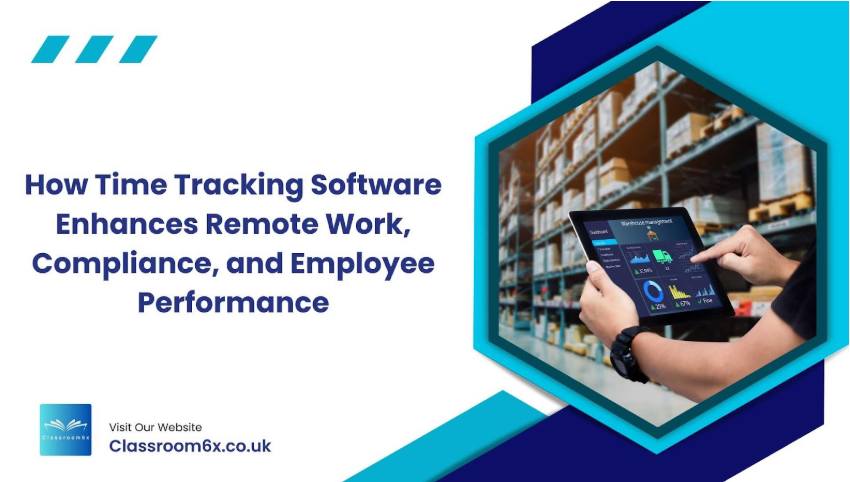How Online Time Tracking for Employees Boosts Remote Work Efficiency, Ensures

Working remotely sounds great, doesn’t it? Pajamas, coffee on your terms, and no more awkward office elevator chats. But here’s the thing: remote work also brings some real challenges — like staying productive, maintaining security, and making sure everyone’s actually doing their job.
That’s where Time Tracking Software steps in. It’s not just about clocking in and out anymore. In today’s digital world, it’s a game-changer for managing people, processes, and performance, especially in remote or hybrid setups.
Let’s dive into how this tool boosts productivity, ensures compliance, and makes life easier for both managers and employees.
Understanding Time Tracking Software
At its core, Time Tracking Software is a digital tool that helps businesses monitor how time is spent. Think of it like a fitness tracker, but for your workday instead of your steps.
It doesn’t just tell you someone worked 8 hours. It shows:
- What tasks were worked on
- Which apps/websites were used
- How active an employee was
- And how efficient that time really was
In short, it provides visibility and insights, not micromanagement.
Key Features That Make It Powerful
Modern Time Tracking Software isn’t just a stopwatch with a dashboard. It’s smarter than that. Here are some key features that matter:
Activity History
- Records when users are active/inactive
- Captures screenshots or app usage data
- Helps spot productivity patterns or issues
Online Time Tracking for Employees
Online Time Tracking for Employees is a good example of a critical feature. It allows real-time monitoring of remote teams, providing full visibility into working hours and task focus.
Productivity Analysis
- Measures time spent on productive vs. non-productive tools
- Offers insights for coaching, not punishing
App & Website Usage Analysis
- Detects which tools help (or hurt) productivity
- Encourages better digital habits
Reports & Dashboards
- Visual breakdowns of how time is used
- Exportable reports for payroll, HR, or performance reviews
Time Tracking + Data Loss Prevention = Double Security
Here’s something many overlook: Time Tracking Software isn’t just about productivity. It’s also a powerful tool for preventing data breaches and securing sensitive information.
When combined with data loss prevention software, time tracking systems can provide real-time oversight of risky behavior — like unauthorized file transfers, suspicious downloads, or the use of blacklisted apps.
Understanding DLP meaning (Data Loss Prevention) is essential here. It refers to tools and strategies designed to detect and stop data breaches before they happen. Integrating DLP with employee monitoring not only protects business data but also ensures that regulatory requirements like GDPR or HIPAA are met.
Pro Tip: Transparency matters. Let employees know what’s being tracked and why. Consent builds trust.
Why It’s Perfect for Remote Work
Remote work is here to stay. But let’s be honest — it’s easy to blur the lines between work time and Netflix time.
Here’s how Time Tracking Software helps remote teams:
- Clarity – Employees know what’s expected, and managers see who’s doing what
- Accountability – No more “I was working, I swear!” moments
- Better communication – Data-driven insights reduce assumptions and micromanaging
- Performance reviews – Objective, transparent, and based on actual work
It’s like giving remote teams a digital workspace that’s structured but flexible.
The Compliance & Privacy Angle
Tracking time and activity sounds a little… Big Brother-ish, right? That’s why ethics and compliance must be part of the equation.
Key compliance considerations:
- GDPR: Make sure you’re not tracking personal data without consent
- Employee agreements: Always inform your team about what’s tracked
- Policy documentation: Clearly define how data is stored, used, and protected
A good Time Tracking Software vendor will build privacy-first features, like:
- Encrypted logs
- Selective tracking settings
- User opt-ins and transparency reports
Real-World Use Cases
Let’s bring this down to earth. Here’s how different industries use Time Tracking Software daily:
| Industry | Use Case |
| Tech Firms | Track project hours across global teams |
| Creative Agencies | Bill clients based on actual work done |
| Call Centers | Monitor performance and customer handling time |
| Consulting Firms | Track time spent on each account for better ROI |
| Remote Startups | Create a structure and rhythm for async work |
Choosing the Right Time Tracking Software for Your Business
Selecting the most suitable online time tracking software for employees is key to optimizing team productivity, ensuring smooth remote workflows, and maintaining compliance. Rather than settling for a one-size-fits-all solution, businesses should assess their specific needs, whether it’s for a small startup or a growing remote workforce. The ideal software should not only track time accurately but also align with your company’s tools, culture, and long-term goals.
Below is a helpful table highlighting the core factors to consider when choosing the right tool:
| Factor | Why It Matters | What to Look For |
| Scalability | Ensures the software can grow with your business | Choose tools that support user expansion, additional projects, and advanced features over time |
| Integrations | Reduces manual work and streamlines data syncing | Look for integration with project management, HR, payroll, and communication tools |
| User-Friendliness | Increases adoption and reduces training time | Simple UI/UX, drag-and-drop features, mobile access, and easy onboarding |
| Reporting & Analytics | Helps in evaluating productivity and compliance | Real-time dashboards, downloadable reports, and trend tracking capabilities |
| Customization | Aligns the tool with your workflows and policies | Custom time entries, flexible billing rates, and permission settings |
| Security & Compliance | Protects employee data and ensures regulatory alignment | GDPR-compliance, encrypted data, user access controls |
| Pricing Model | Affects long-term cost efficiency | Transparent pricing with scalable plans and free trials or demos |
The Future of Time Tracking Software
The workplace is evolving fast. So is time tracking. Here’s what’s coming next:
- AI-powered insights: Auto-suggest improvements or flag burnout risks
- Mobile-first tools: For field teams, freelancers, and digital nomads
- Zero-trust security: Built-in DLP and advanced permission controls
- Predictive productivity dashboards: Know what’s coming, not just what happened
- Smart integrations: Sync with your ecosystem effortlessly
Soon, Time Tracking Software will be more like a virtual business coach than just a monitoring tool.
Final Thoughts
Time Tracking Software isn’t just a tool — it’s a strategy. When done right, it creates a win-win: employees stay focused, businesses stay secure, and performance becomes crystal clear.
So if you’re managing a remote team, facing compliance hurdles, or just want to run a tighter ship, it’s time to look into a solution that works with you, not against you.
Remember, it’s not about spying. It’s about clarity, trust, and growth.
Time Tracking Software is the quiet MVP of modern work. Maybe it’s time you made it part of your team, too.
FAQs About Time Tracking Software
1. Is time tracking legal in remote work setups?
Yes, as long as employees are informed and consent to tracking. Transparency and compliance with data privacy laws (like GDPR) are key.
2. Will employees feel micromanaged using time tracking tools?
Not if it’s used to support, not control. Framing it as a productivity and transparency tool helps build trust.
3. Can time tracking software help with billing clients?
Absolutely. Many tools let you log billable hours, track projects, and export reports for client invoices.
4. What’s the difference between time tracking and employee monitoring?
Time tracking focuses on work hours and productivity. Monitoring includes more detailed activity logs. Some tools offer both with adjustable settings.
5. How do I get buy-in from my team to use tracking software?
Involve them early. Explain the “why,” show the benefits (like fair reviews), and let them test it before rollout.














